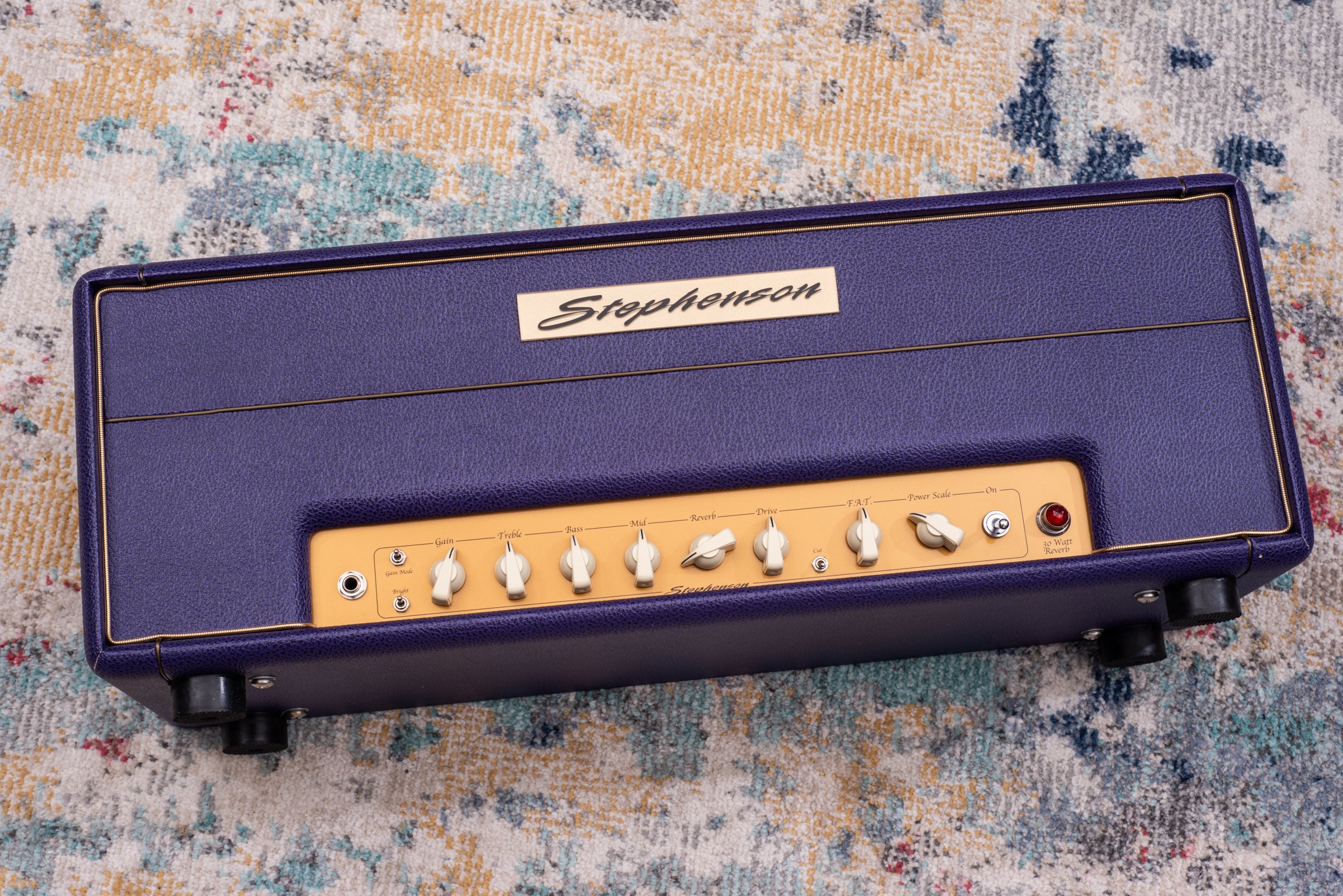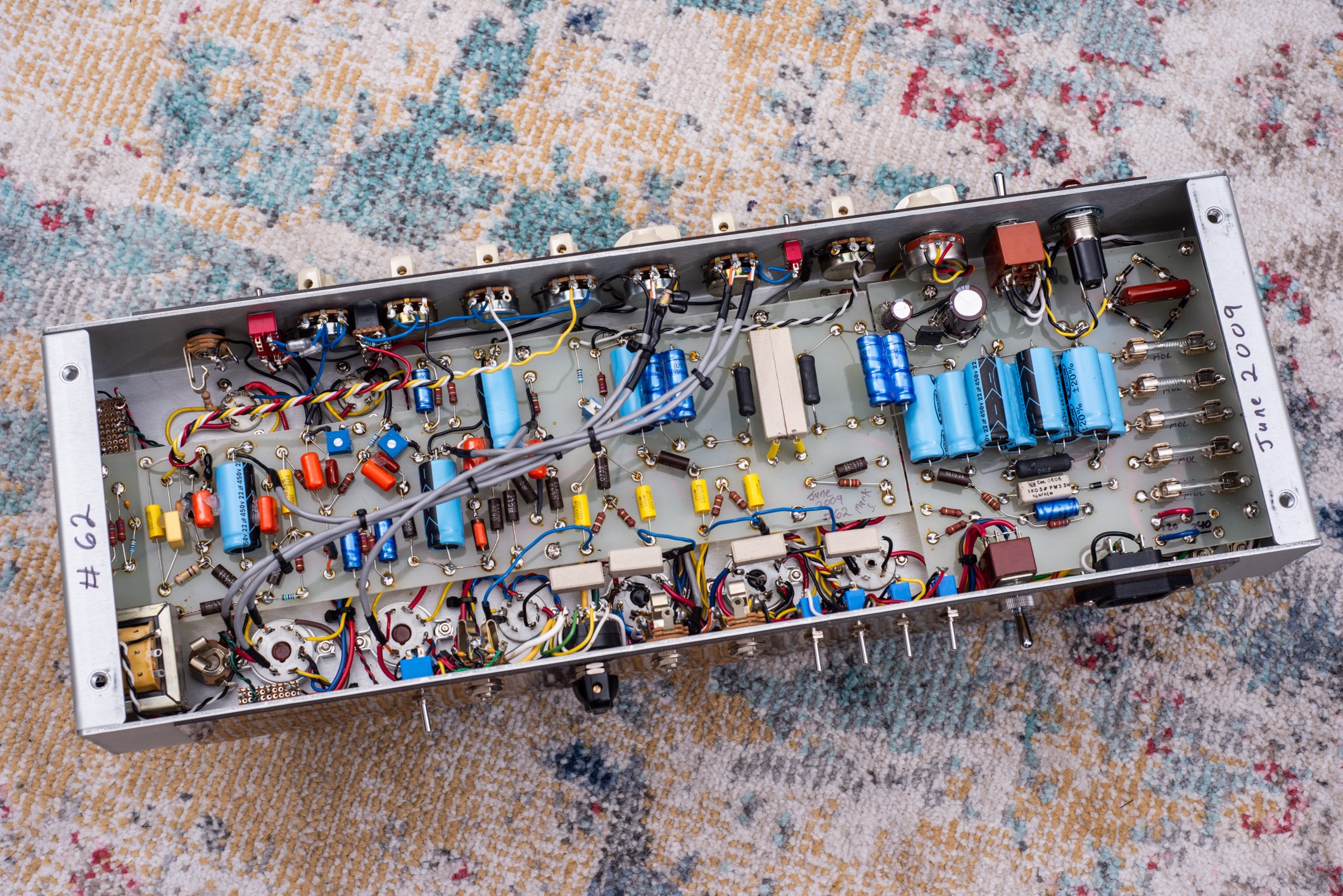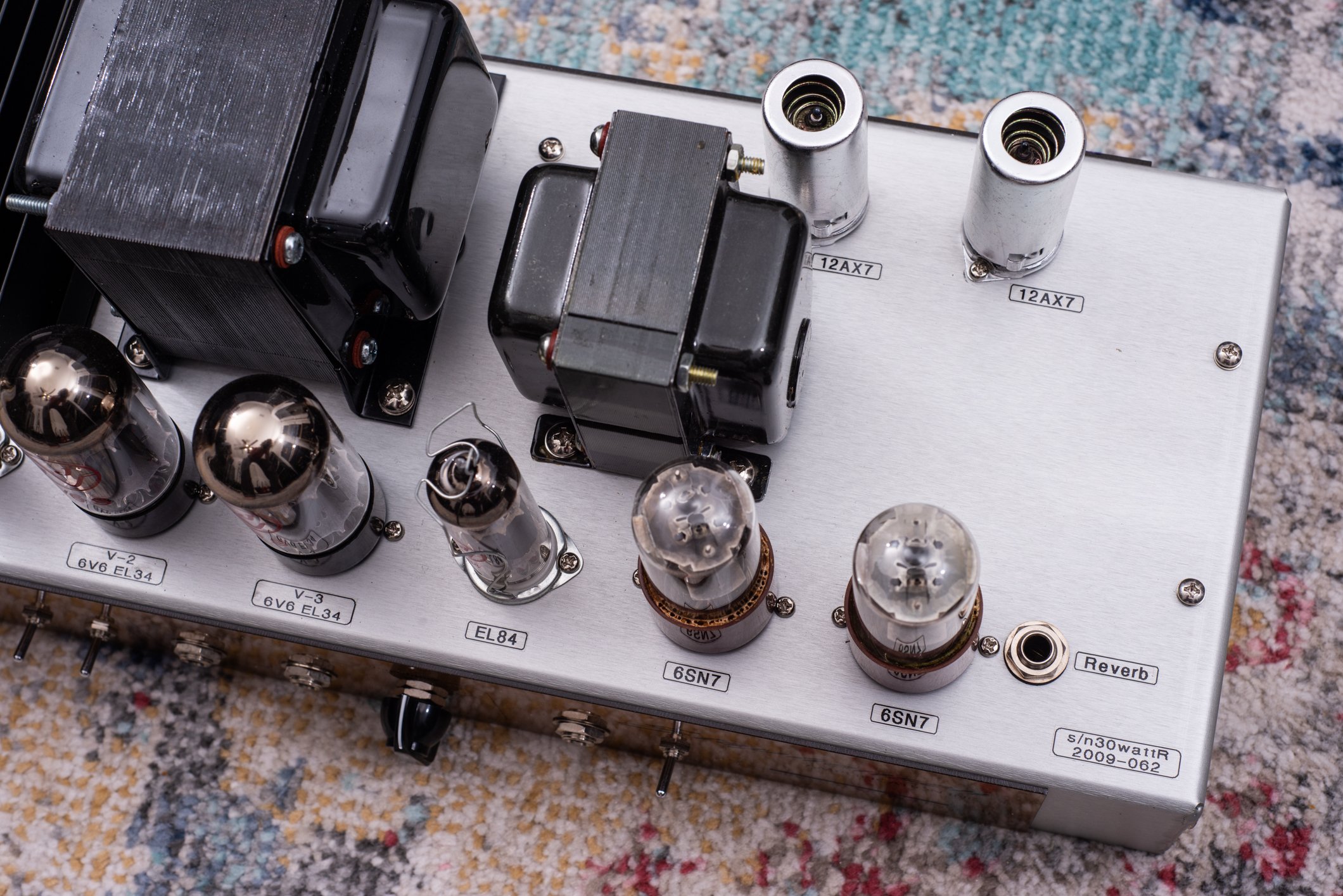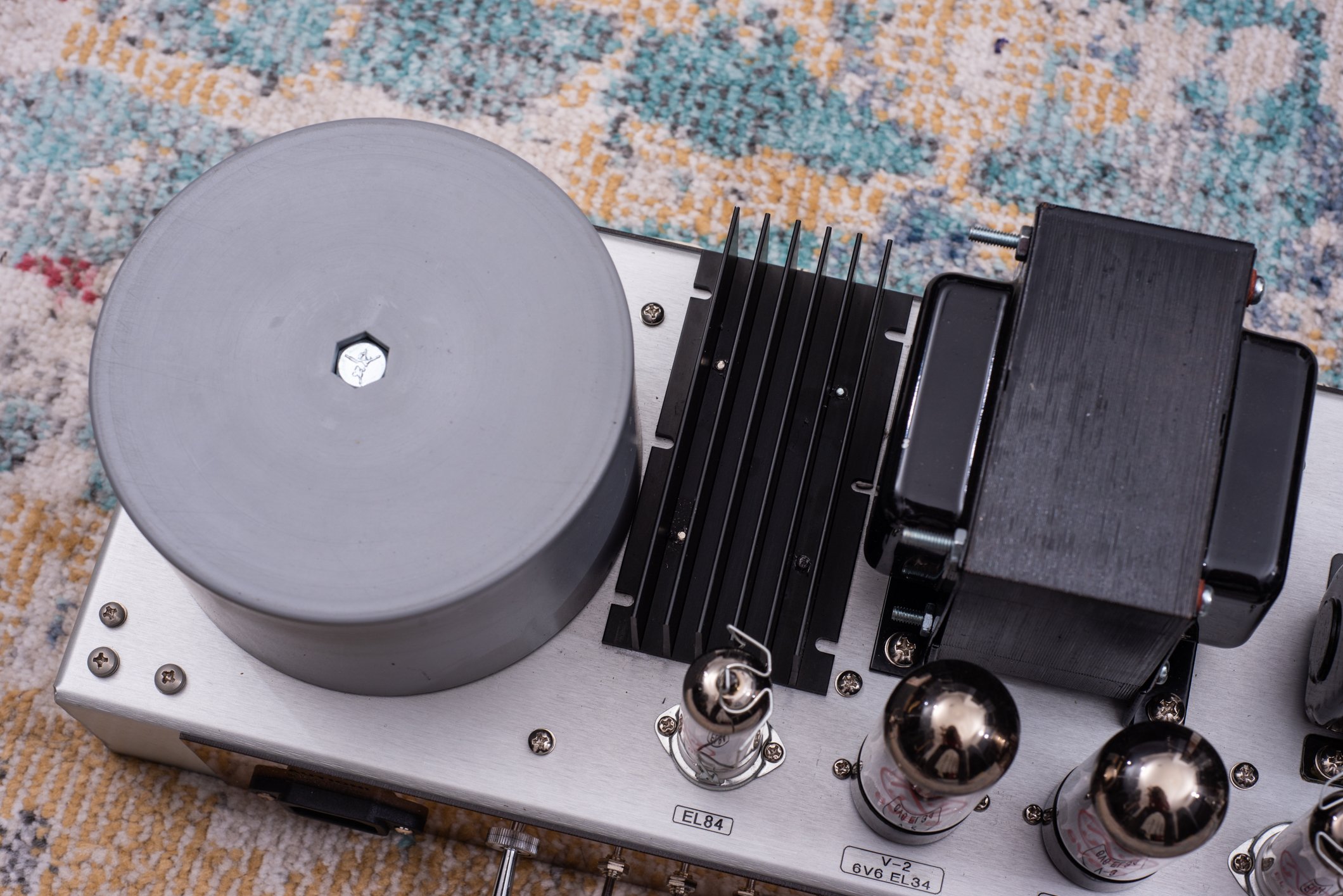This Canadian made amp is a very unique, point to point wired… Plexi-ish head. I’d hesitate to call it a Marshall clone of any kind, despite the visual appearance.
It’s equipped with both a pair of 6V6 and a pair of EL84 power tubes, and each tube can be individually switched on and off from the rear panel - including down to running the amp on a single EL84 or a single 6V6, or asymmetrically with one half of the waveform being say, a 6V6+EL84 and the other half a 6V6 alone.
Going further, the phase inverter utilizes a 6SN7 tube, and the spring reverb is driven/buffered by a 6SN7 tube as well. This amp has no effects loop, although there are other similar Stephenson amps that do.This tube has a gain of “20” when compared to a regular “100” 12AX7, and has an octal base - that’s one less pin than a 12AX7, more similar to octal power tubes like a 6L6, 6V6, or EL34. How this affects the sound exactly… it’s hard to say without knowing more about the circuit. Either way, it’s very unique - I can’t think of any other guitar amps that use this tube type, especially in a phase inverter position. It also has some very unique looking transformers - this one has one large round cylinder, a “toroidal” transformer. More recent Stephenson designs feature two of these, for both the power and output positions.




The front panel has some other quirks. The gain control is self explanatory, but the EQ section has the mids control 3rd in line, after treble and bass - like a Hiwatt (well, sort of, a DR103 goes Bass>Treble>Middle). Maybe I’m reading into the control positions too much, but I wonder what the reason for that is, or if there’s something unique about the EQ circuit.
Going further, there is a Reverb mix control, which works as expected, but then a Drive, Fat, and Powerscale knob. These three controls are very interactive, the power scale works as an overall amp volume and can get down to whisper quiet, or crushingly loud. The Drive control is meant to retain the full volume tone at lower settings, and the Stephenson website recommends matching your drive setting to the same as the power scale control. However I’ve enjoyed tweaking this a bit, higher drive settings add a bit more of a saturated, elastic feel for solos which I really enjoy, although it can get muddy if turned too high while at lower volumes.The FAT control stands for Feedback Attenuation, which is just a way to control the power amp negative feedback circuit, to increase tightness in the low end, which works great alongside the drive control.
There are also a few switches, such as a 3-way gain, 3-way bright, and a 2-way cut switch. The gain control takes the amp from more polite, nearly clean plexi tones, up to what I’d call “classic high gain” sounds, and plenty saturated depending on the gain, drive, and FAT controls. The bright switch has an “off” setting (center), as well as two different values in the up or down position, which change the frequency that is most prominent in the gain - likely great for cutting through depending on the rest of the band, or the room you’re in, or the cabinet you are using. The cut control chops off some of the upper mids and highs, pushing the low end and low mids forward in the mix a bit - useful for low volume playing, but I find the amp sounds its best with this switch off (down position).
On the rear panel, there is an EQ bypass switch, but this doesn’t have as big of an effect on either tone or volume compared to the EQ bypass of the Hook Captain 34 I acquired a few months ago. It’s more subtle on this amp, adding a little bit more grit and punch but preventing some fine tuning of the core tone. Also on the rear is an Ultralinear power mode - I’d love to know what this actually does, it sounds a bit like the Class A/AB switch on some other amps, so I suspect it is doing something similar in the power amp section.
This amp is no longer offered, but it’s a great sound. I suspect the current Deluxe is the most similar to this, and I’m intrigued by the Dual-Plexi, which is similar but with separate “Normal” and “Bright” volumes, like a jumpered 4-hole Marshall. Neither has Reverb, and they’ve all gone down to 3 power tubes instead of 4 - considering how much I like the all-four-on sounds from this model, I feel lucky to have it.
See https://stephensonamps.com/ for more information about current offerings.